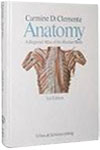NOTABILI ET SENTENTIE DI QUATTRO DOCTORI: GERONIMO, GREGORIO, AGUSTINO ET AMRUGIO
A BEAUTIFULLY DECORATED AND DATED HUMANIST ILLUMINATED VELLUM MANUSCRIPT IN ITALIAN AND LATIN
From
Phillip J. Pirages Rare Books (ABAA), McMinnville, OR, U.S.A.
Seller rating 5 out of 5 stars
![]()
AbeBooks Seller since 21 March 2000
About this Item
Description:
268 x 187 mm. (10 1/2 x 7 3/8"). 176 leaves, COMPLETE, single column, 31 lines alternating red ink for Latin and dark brown ink for Italian translation, in a very fine humanist hand. Contemporary Italian panelled calf over wooden boards, cover with mitered frame of blind rules, inner arabesque roll frame, and central panel diapered in ogival compartments formed by interlacing semi-circular rope tools, raised bands, original clasps replaced with modern hardware, edges gilt and gauffered with chevrons and flowers, expertly rebacked to style. Paragraph marks in red or blue, initial letters of each sentence in contrasting color to main text, running titles in red, 10 ORNATE WHITE VINE INITIALS, the first two very large and extending quite far down the page, the letters burnished gold and skillfully linked with white vines against a pink and green background outlined with blue and further decorated with clusters of white dots (the drawing of a crowned female head in the margin of one page). Front endleaf with 17th or 18th century signature of Eduardo Lopez, dated colophon on final page, rear pastedown with a 19th century English price code in pounds and shillings. â Front joint cracked (but no looseness), leather with a few small wormholes, binding with general wear and significant (careful) restoration, but still retaining much of its original appeal; red ink not infrequently faded to varying degrees (though never illegible), a few light scuffs or thumb smudges on the title and the occasional leaf, otherwise in thoroughly excellent condition, entirely fresh, quite clean, and with ample margins. This beautifully crafted work contains a dated but unpublished text that was compiled for the private edification and elevation of an unknown patron obviously with considerable means, clearly with a desire to attain greater understanding, and apparently without the classical learning typically needed for ready access to it. The manuscript contains excerpts from five books of the Bible (Isaiah, Jeremiah, Job, Psalms, and Proverbs) as well as various texts written by four of the Latin Church Fathers. These include Jerome, "Epistles" (ff. 46r-130v) and "Homilies on Ezechiel" (ff. 130v- 53r); Augustine, "City of God" (ff. 135r-140r) and "Confessions" (ff. 140v-146v); Ambrose, "De Iacob et Vita Beata" (ff. 146v-150r); and Cyprian, "Ad Donatum" (ff. 150v-151r). Each excerpt is presented in the original Latin followed by the Italian translation in contrasting ink, making this not only an object of great interest from a scholarly standpoint, but also aesthetically very pleasing to look at. While the compiler of the text remains anonymous, the manuscript has recently been identified as a sister copy of Rossi MS 88 at the Accademia Nazionale dei Lincei, and MS 335 of the Biblioteca Riccardiana, (both of which manuscripts are without dates). The Riccardiana MS can be placed at the Dominican convent of San Marco in Florence by the mid-16th century at the very latest. Given this early association, it seems quite possible that the editor here would have been connected to the convent in some significant way. The Riccardiana manuscript is notably smaller than the present one, and its more modest dimensions would have been suitable for an inmate at the convent. By contrast, the larger, more opulent version seen here (and in the Rossi MS) would have been more appropriate for the use of a wealthy patron. The convent of San Marco did not lack for illustrious connections and was itself an important center for art and culture in the Medici-ruled Florence of the 15th century. Its status was in no small way bolstered by the efforts of the great patron of the arts Cosimo il Vecchio de' Medici (also known as "the elder"), who not only kept a cell on the premises, but also took it upon himself to renovate the aging structure. Among the notable artists who contributed to its renewal were the sculptor and architect Michelozzo (d. 1472) and painter Fra Angelico (d. 145. Seller Inventory # ST13058
Bibliographic Details
Title: NOTABILI ET SENTENTIE DI QUATTRO DOCTORI: ...
Publisher: colophon dated 1456-57, Italy [Florence]
Publication Date: 1456
AbeBooks offers millions of new, used, rare and out-of-print books, as well as cheap textbooks from thousands of booksellers around the world. Shopping on AbeBooks is easy, safe and 100% secure - search for your book, purchase a copy via our secure checkout and the bookseller ships it straight to you.
Search thousands of booksellers selling millions of new & used books
New & Used Books
New and used copies of new releases, best sellers and award winners. Save money with our huge selection.
Rare & Out of Print Books
From scarce first editions to sought-after signatures, find an array of rare, valuable and highly collectible books.







